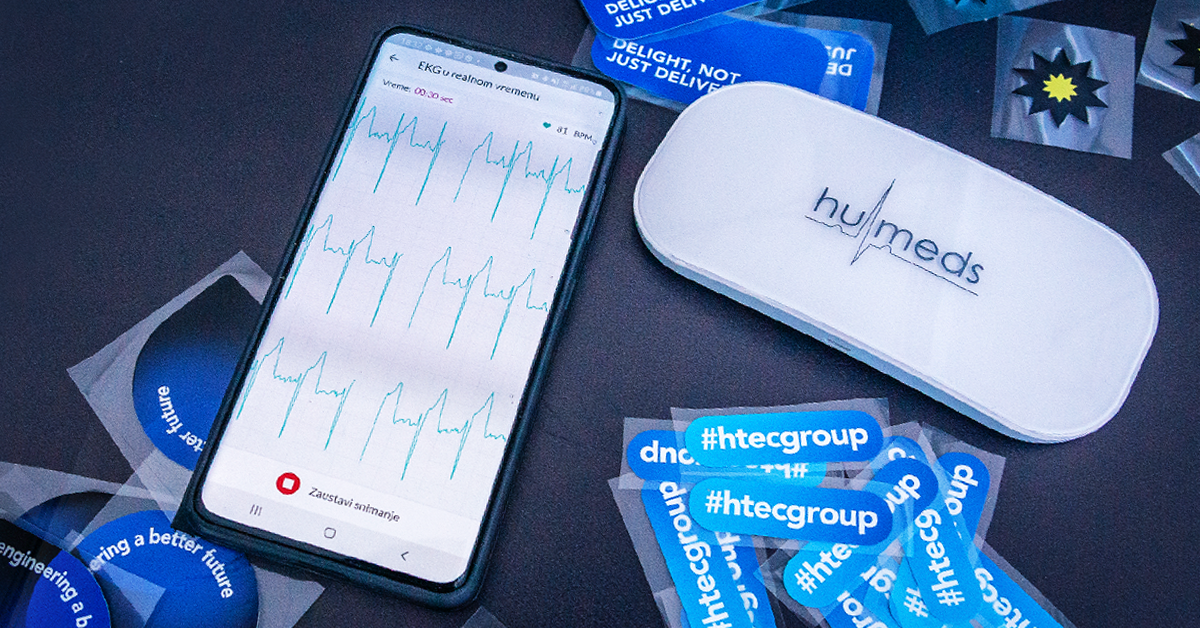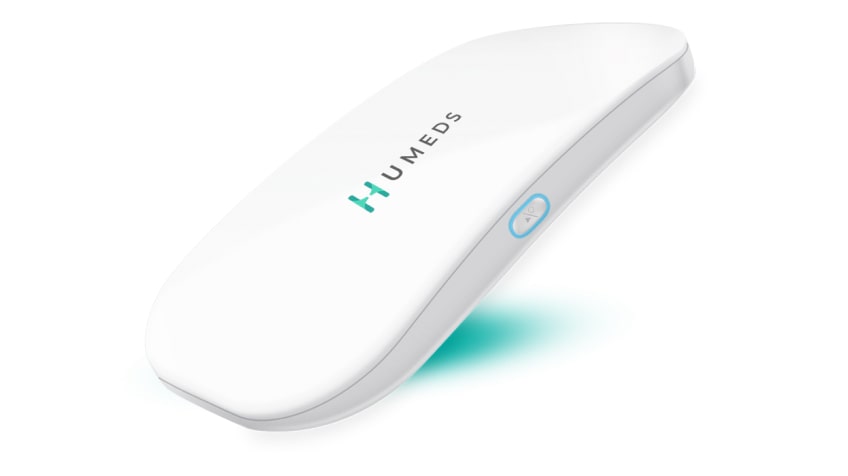According to WHO (World Health Organization), cardiovascular diseases (CVDs) are the leading cause of death globally, taking an estimated 17.9 million lives each year.
Having recognized this threat, and being personally touched by these devastating stats, one of our engineering leads, Srdjan Jovanovic, decided to transcend existing technology and look for ways to build a product that would really help people manage and fight back against this fatal disease.
HTEC leadership jumped at the chance and decided to support a team of engineers and cardiologists in building a product that was not yet available on the market but had the potential to make a radical impact and save many lives.
HTEC partnered with leading cardiologists and electrophysiologists to develop Humeds, a medical system that enables quick and comfortable ECG recordings, followed by automatic and precise diagnosis of cardiac arrhythmias.
Humeds is a small-factor mobile device that uses dry electrodes to allow patients to record the signal without any medical preparation or experience.

Humeds: The story behind the success
We talked with Srdjan Jovanovic, director of people operations at HTEC and leading engineer on the Humeds project, about how this unique product came to life, and how it can impact the future of telehealth and improve people’s well-being around the world.

How did the Humeds project come to be?
Srdjan: “HTEC Group was built on the foundation of great engineering and deep technology expertise. While developing state-of-the-art products for our customers, we wanted to invest our time and expertise in solving complex issues of humanity and increasing people’s health and well-being — automated analysis of the ECG signal is one of those issues.
“As opposed to the most common in-house diagnostic tools (blood pressure, blood sugar) where measurement analysis is based on the understanding of where you are compared to the well-known thresholds, in ECG analysis, it is required to have an expert that is trained and experienced in reading and classifying the ECG signal.
“This motivated HTEC to develop a set of algorithms, expert systems, and neural networks to achieve close to 99% accuracy when classifying signals, whether normal or arrhythmic.”
Why did you decide to build a portable ECG monitor?
Srdjan: “In the process of collecting signals that would be used for training and testing of algorithms, we were faced with the same problems that all people having heart issues face every day – the complex usage process and very low diagnostic yield of a standard ECG Holter unit.
“Based on a study done by the US health system, only 27% of the signals that are collected with a standard holter have a diagnostic potential. The remaining 73% of the signals [patients] will have to either go through the same process of scheduling and wearing a holter, or alternatively, use a Humeds-like portable ECG monitor.
“Together with the leading ECG experts in the region, we designed a hand-held portable ECG monitor device that leverages the reliability and ease of use of dry electrodes. Humeds is a small-factor device that can be carried in a pocket or a bag, but with sufficient size to allow us to collect, when applied to the chest, three different ECG leads [same as a holter], which is a gold standard in the ECG analysis.
“After successfully completing clinical studies, gaining certifications, and receiving a medical grade CE mark, we were able to match our algorithms with the device, mobile and web applications, and the cloud to build the entire Humeds ecosystem.”
What was the main driver of success for the Humeds project?
Srdjan: “One of the reasons why HTEC Group is one of the most successful engineering companies is our ability to match in-house deep engineering expertise with domain knowledge coming from the field experts.
“This was the model that we applied to the development of Humeds medical system as well, which helped us focus on solving the real problems and getting the right questions — not just the answers — and ideas from the other side.”
What are the next steps?
Srdjan: “We finished all clinical studies that have shown the potential of the system. We completed the certification process and got the CE mark, and now we are in the process of piloting our solution with the state health system and private clinics at the same time.”
Want to learn more about how HTEC’s technology expertise can transform your business? Explore our Product Engineering and Healthcare & Life Sciences capabilities.






